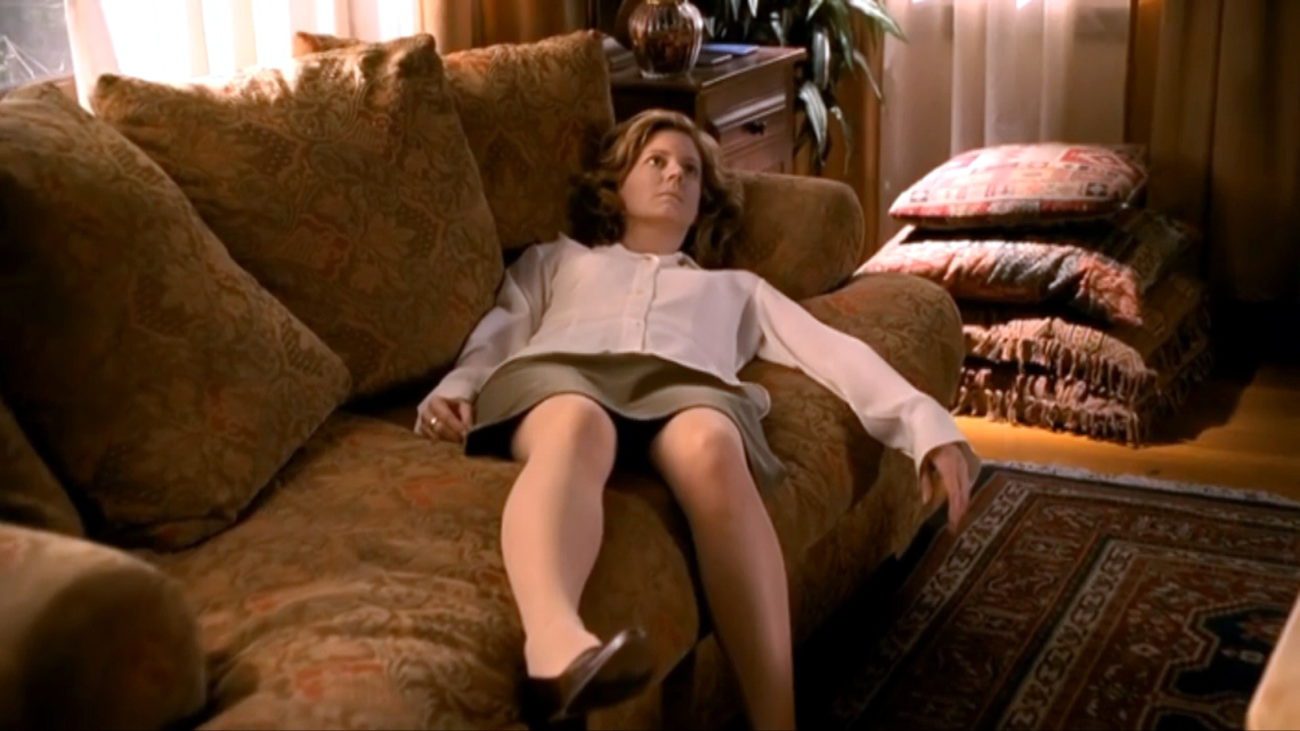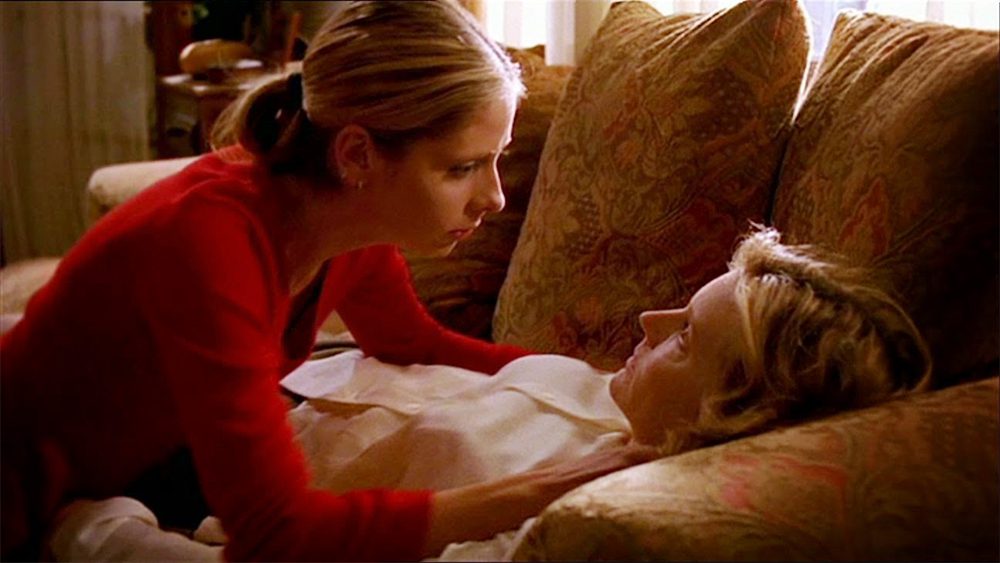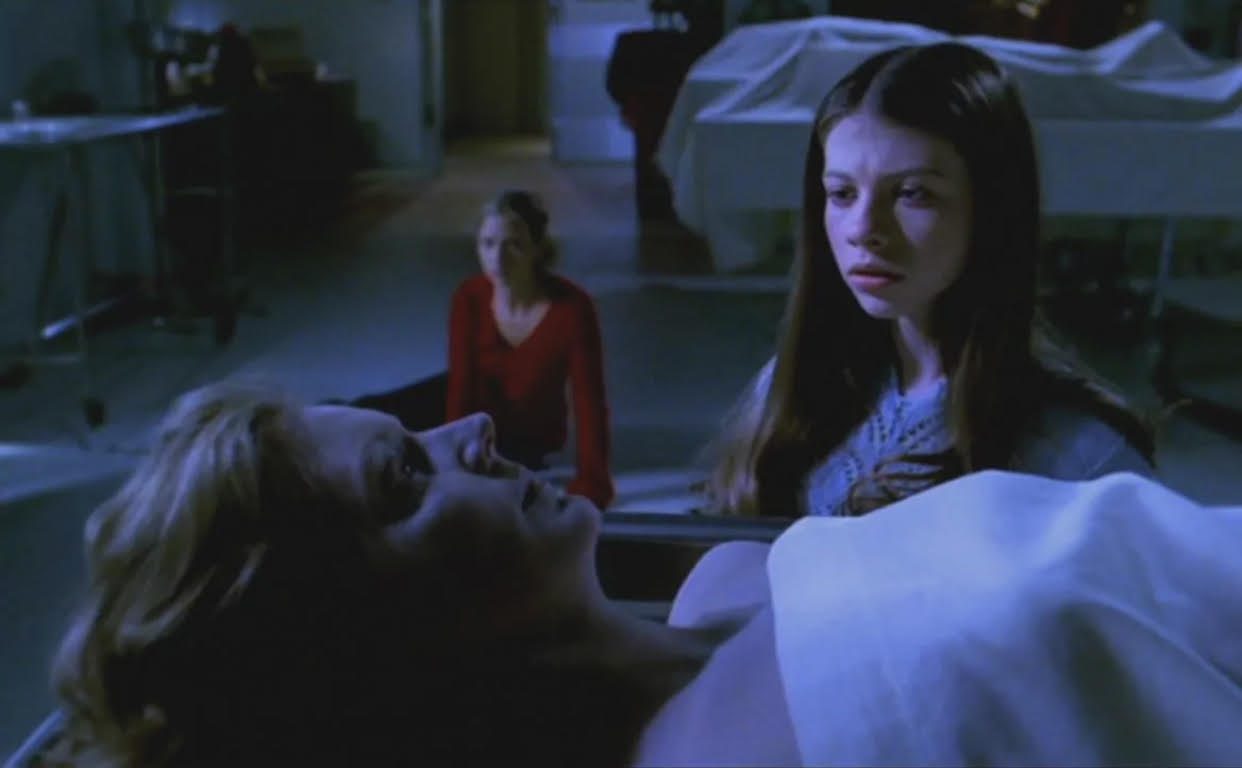Revisiting Buffy the Vampire Slayer’s finest moments can mean revisiting its most traumatic. The show’s willingness to reject the comfort-food demands of ’90s television resulted in several ambitious heartbreaks, chief among them the desolate triumph of “The Body”. It’s an episode that stops you in your tracks and keeps a part of you stopped there. It’s also home to one of the show’s biggest spoilers, so if you’re a newcomer to Buffy in the wake of its 25th anniversary, consider circling back after you’ve seen the episode (provided you’ve had time to decompress).
In case the events of “The Body” haven’t burned themselves into your brain, it’s the one where Buffy finds her mom’s corpse on the couch after she dies of a brain aneurism. That matter-of-fact anguish burns throughout the episode, capturing the loss of a loved one in all its impossible suddenness. The impact on viewers was—and is—sizable. “The Body” stands not only as one of Buffy’s saddest episodes but also as one of its best: at the time of release, critics hailed it as an all-time great episode of television. It still holds up 21 years later. The deafening lack of a score, the perfectly pitched anguish of the performances, the small but unsparing formal choices—they cohere into something significant and sorrowful. It remains just as impressive and hard to watch.
That Buffy the Vampire Slayer pulled off “The Body” isn’t a fluke. The episode was a cumulative result of the show seizing its unique place in TV history. If it weren’t for Buffy pushing the medium in new directions, an episode like “The Body” could never have existed—and given how TV has changed since, it’s unlikely an episode like it will ever air again.

TV Before Buffy
TV has long been shaped by its technological, economic, and cultural contexts. Initially, people saw TV less as a counterpart to cinema and more as the successor to radio: a living room centerpiece around which the nuclear family would gather to watch the latest broadcast. Consequently, most TV offerings were bite-sized, which dictated the structure of your average TV show—episodic. By the ’50s and ’60s, when shows dominated as much of the airwaves as news, sports, and American propaganda, the episodic format was the norm. To keep attracting new viewers, any given episode of a show had to serve as an adequate point of entry. From sitcoms like I Love Lucy to popular dramas like Perry Mason, TV narratives started and ended the same day, restoring the show’s status quo before next week’s episode.
Serialized storytelling—in which a single, continuous narrative is told in multiple segments—was mostly limited to soap operas (The Guiding Light, Dallas) and children’s adventure shows (the original Doctor Who) as these types of programs had long histories as radio serials. In the late ’80s and early ’90s, however, other genres dipped their toes into seriality. The reasons were manifold: the introduction of VHS allowed viewers to watch full seasons in one sitting, changing perceptions of TV’s requisite structure; the end of Hollywood’s golden age led to movie-lovers (and their expectations) migrating to TV; cinematic serials like Twin Peaks (well, the first season anyway) proved that long story arcs could find a dedicated TV audience. When shows began merging the episodic with the serial, they ushered in what scholars call the Golden Age of Television—and Buffy the Vampire Slayer was at the forefront.
An Episodic Serial
90s sci-fi shows took tentative steps toward the episodic serial. Quantum Leap, The X-Files, and Star Trek: Deep Space Nine featured short bursts of serial elements, devoting periodic episodes to mythology deep dives and recurring villains. It was Buffy that refined the formula, however, years before The Sopranos took it to the mainstream. The back half of Buffy’s second season is arguably the first shining example of the episodic serial. Without losing the strengths of memorable, self-contained stories, Buffy develops season-long character, narrative, and thematic arcs in its every episode. This sounds par for the course today, but in the late 90s, it was a revolution in what TV could be.
Buffy’s supernatural elements gave it an advantage that its Golden Age contemporaries lacked (and still lack). While its long-game arcs and in-depth characters kept it reliably serialized, its fantasy shenanigans (swapping bodies, muting characters’ voices, reshaping reality itself) kept its episodic stories fresh and unpredictable. During Buffy’s last season, Peter Mattessi—an Australian screenwriter who’d go on to write for Neighbours and EastEnders—wrote that like Six Feet Under, The Sopranos, and The West Wing, Buffy demonstrates “recurring thematic ideas played out by a core cast of characters in episodic, self-contained narratives […] but unlike the others, [it] has cleverly resisted the pull towards atrophy by creating a diegetic world where variation on characters, scenarios, and generic techniques is not only tolerated, but encouraged and celebrated by fans.” As an episodic serial, the show captures the best of both worlds.
The structure that Buffy refined fit the series like a glove. And if “The Body” struck your heart like a bolt of lightning, then that structure was the perfect storm.
Sudden Death

Buffy’s serial elements warm us to Joyce Summers. She’s variously a comfort and an obstacle to Buffy, a beacon of normalcy when Buffy goes off to college, a Sunnydale resident enduring the Hellmouth’s games, a lonely woman looking for love, and most of all, she’s a mom who tries, fails, and tries again to protect a daughter who protects the world. For a recurring character outside the main cast, it’s remarkable how felt her presence is. Buffy’s serial makeup builds Joyce’s character in innumerable little moments, fleshing her out piecemeal in the periphery—and occasionally in the foreground—of the 53 episodes she appears in before her death. Leading up to “The Body”, the show’s serial threads focus heavily on Joyce, endearing us to her company and cementing her as a crux of Buffy’s world.
When the show kills her off, it leverages the other half of its dual structure. “The Body” is an event episode. Its subject matter is just as single-minded as “The Wish,” “Hush,” or “Once More, with Feeling.” After a serialized buildup, “The Body” puts us through an episode, a self-contained prison of shock, loss, and existential dread. It flips the switch on Buffy’s brand of episodic serial, relegating the supernatural to the background and forcing true horrors to the fore. Character deaths in contemporary TV—which, due to the streaming era, has taken a massive swing away from episodic—excel in buildup and fallout, but they’re rarely buoyed by a structural flow that allows the show to stop dead in its tracks. “The Body” is 44 minutes of pure, uncut grief, resolute in its unyielding encapsulation of losing a parent.
It’s not the episode in which Buffy’s mom dies; it’s the Buffy’s Mom Dies episode. That distinction makes all the difference.
No Re-Joyce
Conversely, older, more episodic dramas suffer from the inevitable return to normalcy. Take the Season 3 finale of M*A*S*H, for example, in which Lt. Colonel Henry Blake is honorably discharged but killed on the flight home. It was a startling death for a beloved character—in fact, it was one of the first times a show had ever killed off a major character—but Season 4 does its darndest to restore business as usual, both tonally and narratively (although the show’s tone would later shift drastically, mostly due to key creative team departures). In Buffy, the scars from Joyce’s death never fully heal, and her loss bleeds into the show’s serial DNA. You can feel it while watching “The Body”: it’s a point of no return to normalcy.
Buffy’s episodic serial structure enhances “The Body” even further. The combination of Very Special Episodes and long-simmering plot threads encouraged filmmakers to experiment with form—to augment the subtext with techniques that would be out of place elsewhere. Death is an overarching theme of Buffy’s fifth season, but only “The Body” renders it so devastatingly in visual and aural landscapes. The piercing silence, the queasy close-ups, the stark cuts—no other Buffy episode resembles “The Body”, not even remotely. It’s all the more heartbreaking for its singularity. Contemporary TV may be more consistently formally daring, but few stand out in a lineup of lookalikes.
Finitude

Shortly after Buffy’s finale in 2004, media theorist Douglas Kellner wrote the following of the series: “Probably no show in the history of television has so consistently articulated chance and contingency in life and confronted finitude: that relations end, that stages of life [i.e. youth] come to an end, and that life can end anytime and in any place. Probably no popular TV show has so exemplified this existential ontology […] [it] provides a philosophical bite and vision rare in American television.” Of Buffy’s many hours, “The Body” articulates this vision most clearly. The innovations of the episodic serial gave it the tools to do so: after the careful, serial buildup of Joyce Summers as a character, “The Body” rips her away, wrapping you in rigor mortis for a whole traumatic episode. TV may never again produce such brilliantly structured agony.


This is an excellent piece, in the Top Ten of all that I have read on 25YL in the past three years — well-researched, comprehensive, intelligent and thoughtful.